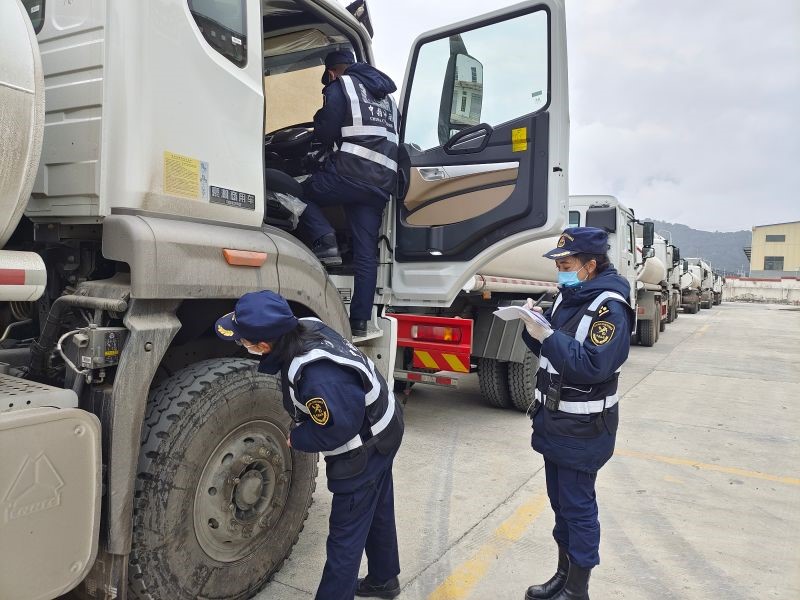Tibet autonomous region fosters new growth areas of foreign trade
"You have completed the order and received full payment," said a transaction notification received by Li Chaohua, a man that runs a trade company in southwest China's Tibet autonomous region, in late February this year.

A double-decker pure electric tour bus manufactured by Chinese carmaker BYD drives by the Potala Palace, Lhasa. (Photo from BYD)
It marked the first time this year that the man, who has long been engaged in the foreign trade sector, finished an export order of Chinese-produced vehicles.
Li knew the automobile trade policies in Belt and Road countries and regions like the back of his hand, though it was only in the last couple of years that he joined the business of Chinese automobile export.
"For instance, Nepal has raised a national plan to encourage imports of new energy vehicles (NEVs), under which the tariffs on imported NEVs are only around half of those on gas-powered vehicles," he said.
Thanks to the upgrading of transport and power infrastructure in Nepal, as well as the rapid development of and constant technological breakthroughs made in China's electric vehicle industry, China-produced NEVs are quite popular in the South Asian market, Li told People's Daily, adding that his company had exported over 500 Chinese automobiles via the ports in Tibet in 2021, and the number would likely double this year.
Finished vehicle export has become a new area of growth of foreign trade for Tibet. According to Lhasa customs, the autonomous region maintained trade contacts with 32 Belt and Road countries and regions in 2021. Its trade volume with them rose 38.4 percent year on year to 1.98 billion yuan ($311 million), which accounted for 49.4 percent of Tibet's total foreign trade. Exports,in particular, increased by 54.5 percent to 1.89 billion yuan. Tibet's trade volume with the eight countries in South Asia surged 69.8 percent to nearly 1.83 billion yuan.

Officials with Lhasa customs examine trucks to be exported at Jilong Port. (Photo courtesy of Lhasa customs)
According to Khyungda, a customs official in Lhasa, Tibet’s booming foreign trade is a result of favorable policies the autonomous region has rolled out. Shorter clearance period, lower fees and tariffs, as well as the "two-step" customs declaration application have prominently spurred the enthusiasm of foreign trade entities. In 2021, 104 Tibetan companies recorded import or export orders, up 21 from 2020.
Based on the new development trend of foreign trade in Tibet, Lhasa customs has set up exclusive service counters and designated personnel to coordinate customs and foreign trade enterprises, guiding enterprises to normalize their clearance applications, launching legal publicity campaigns and instructing enterprises to prioritize product quality.
Meanwhile, Lhasa customs has also launched a green channel for finished vehicle export business and is working to ensure fastest release of these vehicles with paperless clearance procedures, walk-in examination, and other facilitation measures.
Last year, Lhasa customs examined and released 806 China-produced vehicles worth 145 million yuan, up 792 percent and 760 percent, respectively. In particular, 419 NEVs were exported, surging 974 percent.
In recent years, Tibet autonomous region has been actively integrating itself into the construction of the Belt and Road and the South Asian great passage.
A new transnational railway line for cargo connecting Haidong, Qinghai province, Shigatse, Tibet autonomous region and Kathmandu, Nepal, opened on Dec. 15, 2021. A 30-car train, loaded with 1,350 tonnes of supplies valued at approximately $1.8 million, including everyday items and farm byproducts, departed for its destination in Nepal.

Engineering trucks are rapidly released at Jilong Port, southwest China's Tibet autonomous region. (Photo courtesy of Lhasa customs)
The railway line, constructed under an agreement reached by the commerce offices of five western provinces to promote land transport cooperation between China and Nepal, will further smoothen China's southward trade route. Besides, the official implementation of the Regional Comprehensive Economic Partnership this year will also inject new impetus into the foreign trade development of Tibet.
Tibet autonomous region will keep implementing its campaign to facilitate the people and enterprises, so as to nurture more foreign trade companies, relieve their burden, improve business environment, lift trade facilitation, contribute to the high-quality development of the Belt and Road, and realize long-term stability and high-quality development.
Photos
Related Stories
- Online education aided by Shaanxi launched in Tibet
- Trash for cash, low-carbon sets new trend in Tibet
- Feature: A Tibetan doctor's special family reunion on COVID-19 frontline
- Tibetan seamstress draws inspiration from her multi-ethnic family
- Plateau railway new engine for Tibet's economic growth
- Plateau railway new engine for Tibet's economic growth
- View of "three-colored lakes" in China's Tibet
- Tibet to invest over 22 bln USD in major projects
- 13 monks receive 'doctoral degree' of Tibetan Buddhism
- Tibetan antelopes seen in Gerze County of Ali Prefecture, Tibet
Copyright © 2022 People's Daily Online. All Rights Reserved.










